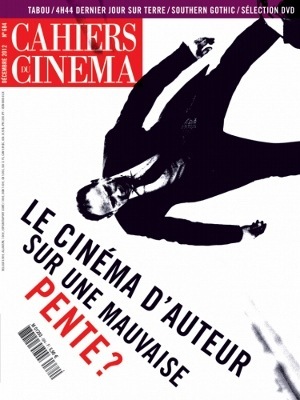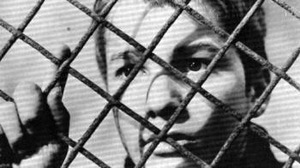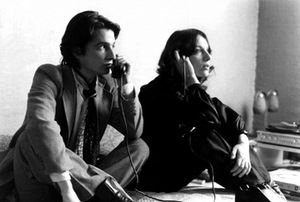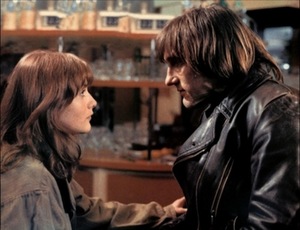History of legendary film journal Cahiers du Cinéma. Notes taken down during the lecture of A.Schweitzer 3
In brief: The author of the film journal Cahiers du Cinéma, cinema critic Ariel Schweitzer presented the history of the publication at Kaunas International Film Festival. A. Schweitzer started writing for the journal in 2004 and became a member of the editors’ office committee several years ago.
The most important and popular film journal Cahiers du Cinéma first appeared in 1951. Set up by three critics Joseph-Marie Lo Ducas, Jacques Doniol-Valcroze and Andre Bazin out of the ashes of the La Revue du Cinema, which had closed down the previous year, it was called Les Cahiers du Cinema. The first issues of the review, with its distinctive yellow cover, featured the best critics of the time writing scholarly articles about film. However, it was with the arrival of a younger generation of critics, including Rohmer, Godard, Rivette, Claude Chabrol and Francois Truffaut, that the paper really began to make waves. These young writers shared a disdain for the mainstream "tradition de qualite", which dominated French cinema at the time.
All authors of Cahiers du Cinéma created their most important films in 1957-1959. Some of them became the greatest directors of the age, and their films became part of the internationally known “New Wave”. The year 1959 is called the revolution of the New Wave cinema.
Cahiers du Cinéma rejected the old-fashioned, academic and conservative cinema that dominated in the French film industry until 1960 and were inspired by two different film trends – American Hollywood cinema and Italian neo-realism. They admired the more realistic cinema vision without professional actors, films created in natural environment, without big budgets. Representatives of the New Wave did not want to remain film theoreticians only and aimed to implement their ideas practically.
After the New Wave Cahiers du Cinéma continued developing its main ideas and aims but something changed at the end of 1960. The radical politicising of cinema took place then. In 1968 students and workers went to streets in protest against the authorities and demanded for freedom of thought and equality. All this influenced filmmaking and film theory. After the New Wave creators took over the aesthetics of the first filmmakers but presented it in the political context.
Cahiers du Cinéma changed completely: it transformed into a political cinema publication. Ideas of psychoanalysis of Jacques Lacan were important in Cahiers du Cinéma of that time. In 1968-1973 the journal was published without any illustrations as photographs were interpreted as pleasure – part of capitalistic machinery. Theory and politics was important to authors of the journal of that time. As a result, the publication lost a number of its readers, film admirers.
Changes are noticed from 1973, when two film critics, Serge Daney and Serge Toubiana took control of the journal and made efforts to return love to films to Cahiers du Cinéma. The rehabilitation process of the journal started. American cinema was rehabilitated first, the barely known in Europe cinema of Hong Kong, Taiwan, China, Thailand, Singapore, South Korea was discovered. Attention was paid to African, Iranian, Israeli art.
Cahiers du Cinéma of that time paid much attention to the relation between film and other disciplines, it aimed to discover new artistic forms. The journal started taking interest in post-modern ideas, raise the question what mass culture was. Until 1990 Cahiers du Cinéma searched for the relations of films with pop culture, television, video installation. The aspect of originality was actualised.






